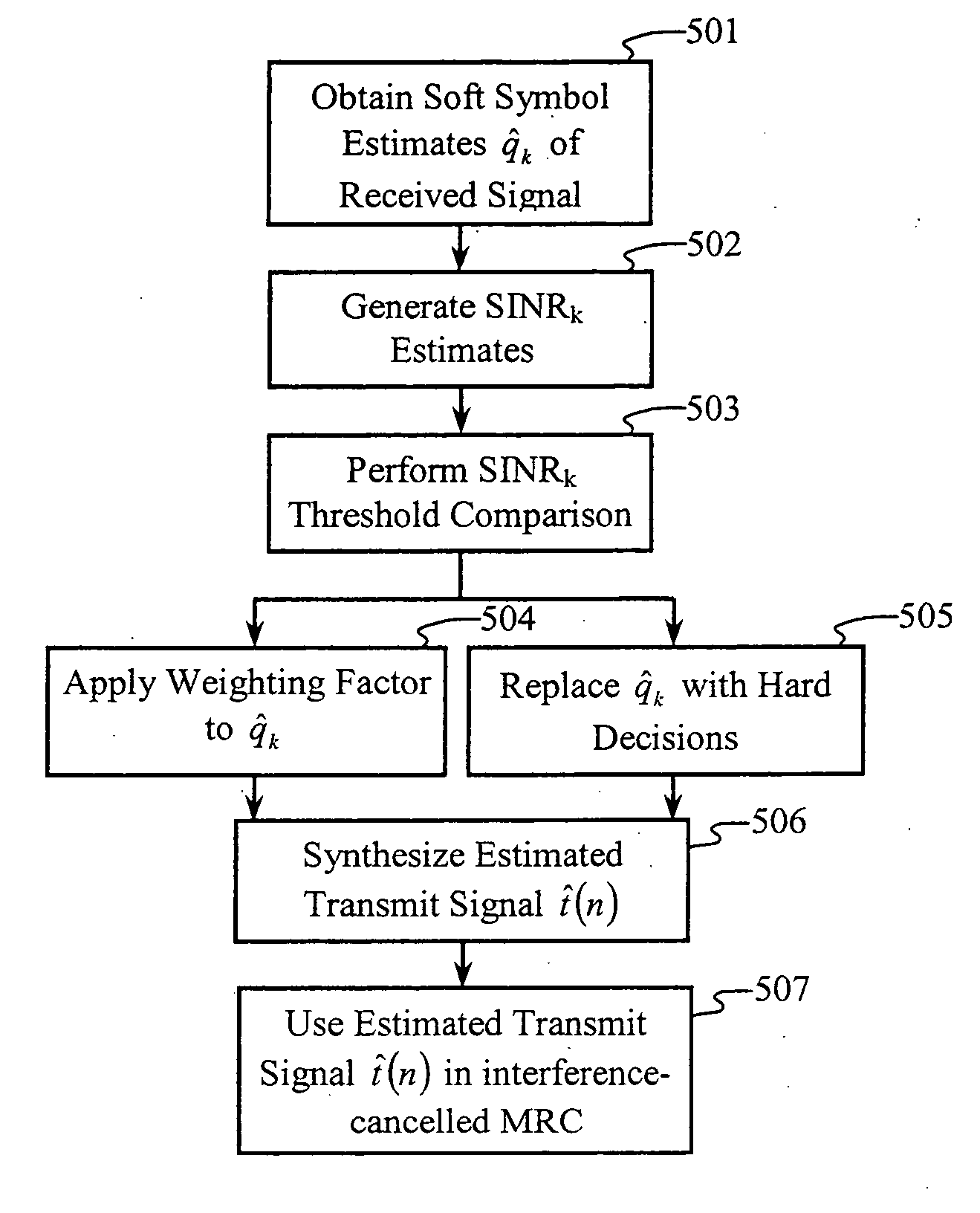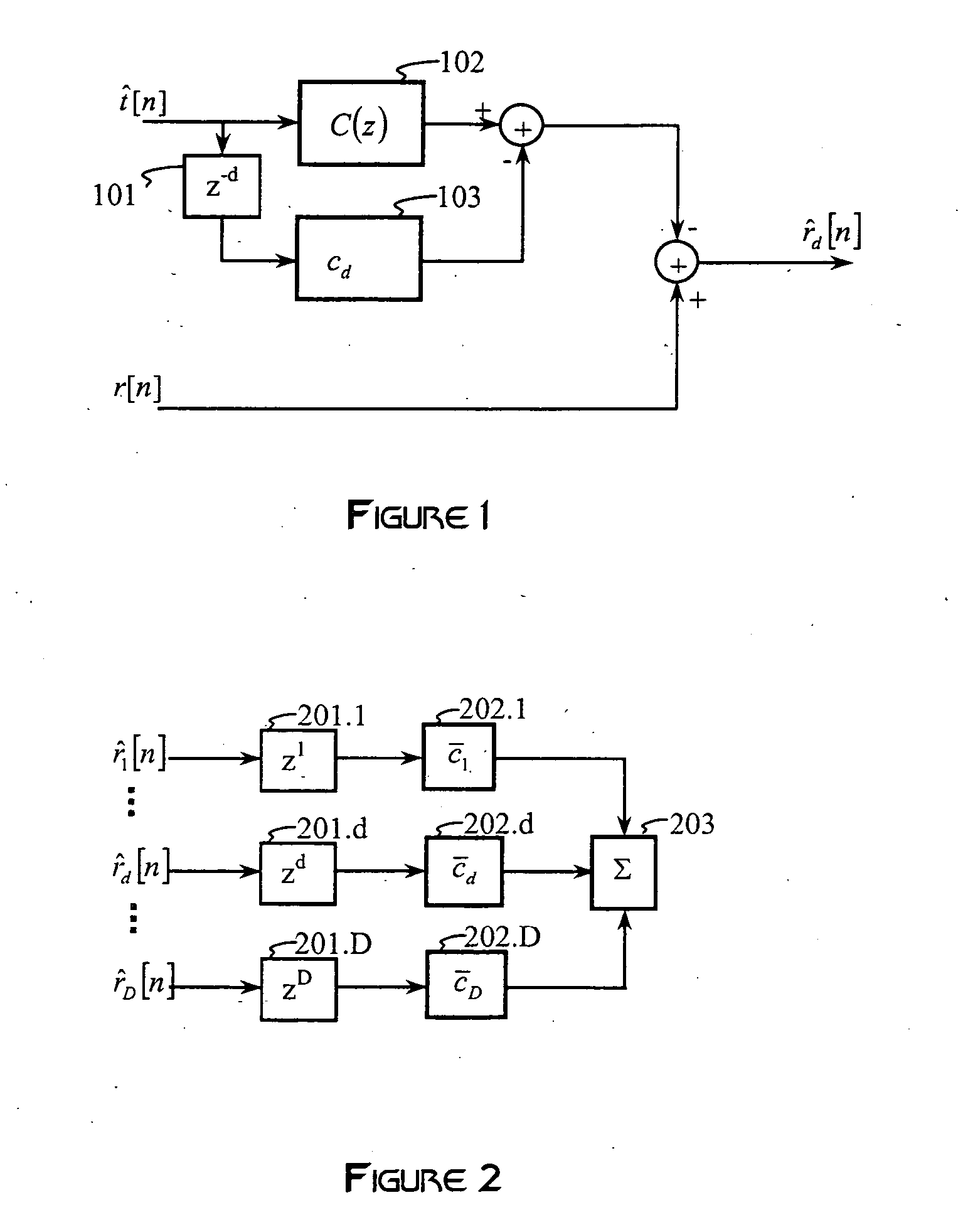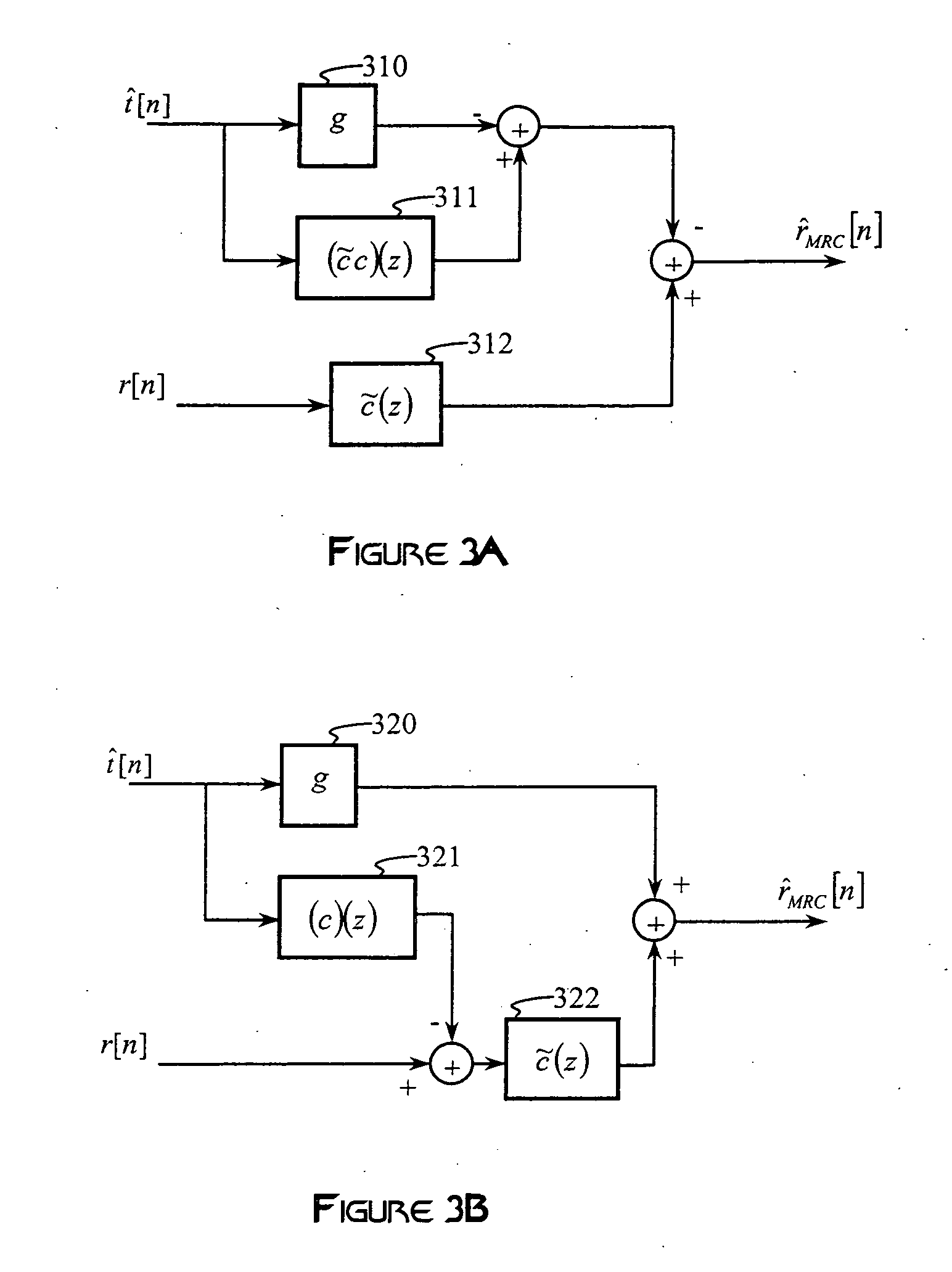Optimal feedback weighting for soft-decision cancellers
a soft-decision canceller and feedback weighting technology, applied in the field of interference cancellation, can solve the problems of co-channel and cross-channel interference, co-channel interference, de-orthogonalization of allocated subchannels, etc., and achieve the effect of maximizing this quantity
- Summary
- Abstract
- Description
- Claims
- Application Information
AI Technical Summary
Benefits of technology
Problems solved by technology
Method used
Image
Examples
Embodiment Construction
[0024] The present invention will now be described more fully hereinafter with reference to the accompanying drawings, in which preferred embodiments of the invention are shown. This invention may, however, be embodied in many different forms and should not be construed as limited to the embodiments set forth herein. Rather, these embodiments are provided so that this disclosure will be thorough and complete, and will fully convey the scope of the invention to those skilled in the art.
[0025] The general formulation for a received multipath signal r[n] after filtering and sampling at a sampling rate 1 / tS is r[n]=∑k=0K-1xk[n]+w[n],
where xk[n] is a received signal corresponding to user (or subchannel) k for sample n, and w(n) represents additive noise. The received signal xk[n] is a convolution of a transmitted signal tk[n] corresponding to user (or subchannel) k and a channel impulse response c[n] corresponding to the sample rate: xk[n]=(c*tk)[n],c[n]=∑d=0D-1cdδ[n-d],a...
PUM
 Login to View More
Login to View More Abstract
Description
Claims
Application Information
 Login to View More
Login to View More - R&D
- Intellectual Property
- Life Sciences
- Materials
- Tech Scout
- Unparalleled Data Quality
- Higher Quality Content
- 60% Fewer Hallucinations
Browse by: Latest US Patents, China's latest patents, Technical Efficacy Thesaurus, Application Domain, Technology Topic, Popular Technical Reports.
© 2025 PatSnap. All rights reserved.Legal|Privacy policy|Modern Slavery Act Transparency Statement|Sitemap|About US| Contact US: help@patsnap.com



